Getting your medication schedule right isn’t just about setting an alarm. It’s about reading the tiny print on your prescription label and turning it into a daily routine that actually works. Too many people miss doses, take pills at the wrong time, or double up because they didn’t understand what the label really said. The result? Hospital visits, side effects, or meds that just don’t work. The good news? You can fix this - by learning how to use the information on your label to build accurate, safe reminders.
What’s Actually on Your Medication Label?
Your prescription label isn’t just a formality. It’s a legal document with precise instructions. The FDA requires every label to include key details: the name of the drug, how much to take, how often, and special rules like whether to take it with food or on an empty stomach. You might see phrases like:- "Take one tablet by mouth every 8 hours"
- "Take with food to avoid stomach upset"
- "Do not take within 2 hours of antacids"
- "Use only as directed - do not exceed 4 doses in 24 hours"
Why Basic Alarms Fail
Most people set reminders using phone alarms or simple apps like "Take pill at 8 AM and 8 PM." That’s fine if you only take two pills a day, but it breaks down fast with complex regimens. Imagine you’re on five medications. One needs to be taken three times a day, another only in the morning, a third must be spaced 12 hours apart, and one can’t be taken within two hours of your blood thinner. A basic alarm won’t catch that. It just beeps at fixed times - no matter what the label says. A 2024 study in the Journal of Medical Systems found that generic reminder apps like Alarmy missed critical timing rules in 63% of cases. That’s not a small error - it’s a safety gap. Patients on multiple drugs are especially at risk. According to the FDA’s adverse event reports, 37.8% of overdoses in people taking four or more medications happened because their reminder system ignored minimum dose intervals.How to Turn Label Text Into Smart Reminders
Here’s how to do it right, step by step:- Read every word on the label. Don’t skim. Look for phrases like "every X hours," "with/without food," "before/after meals," "do not exceed," or "separate from other meds by Y hours."
- Write down the timing rules. If the label says "take every 8 hours," that means three times a day - not just morning and night. Eight hours apart means 8 AM, 4 PM, and 12 AM. But if you sleep through the night, you might need to adjust. That’s okay - just don’t skip it.
- Check for food or drug interactions. If your label says "take on an empty stomach," schedule it at least one hour before or two hours after eating. If it says "avoid alcohol," mark that in your notes.
- Map out conflicts. If you take two drugs that can’t be taken close together (like warfarin and ibuprofen), space them out. Use a timer app that lets you set gaps between reminders.
- Use a smart app that reads labels. Apps like Medisafe and MyTherapy let you scan your pill bottle with your phone’s camera. They use AI to extract the text, interpret the instructions, and auto-set reminders with correct intervals. One user on Trustpilot said, "It read my label and set reminders for my blood pressure pill to be taken 2 hours before my diabetes med - my doctor said that was critical, but I never understood why until the app showed me."
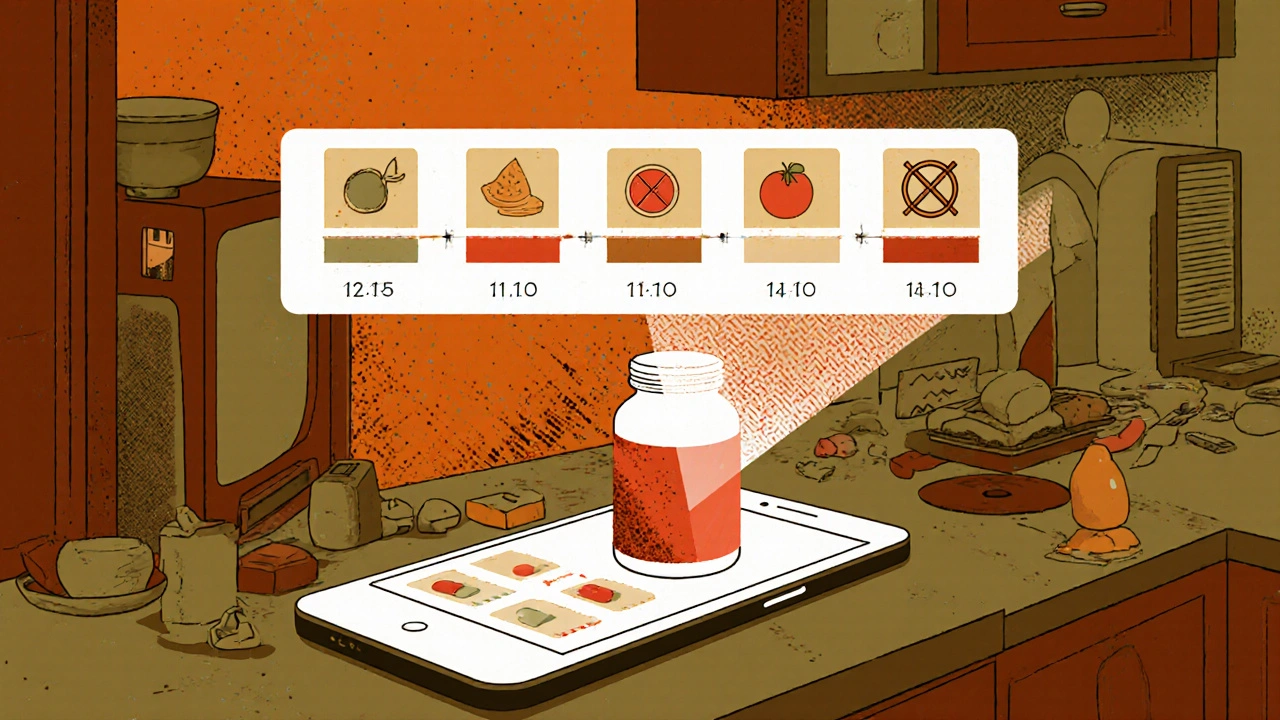
What to Do When Labels Are Confusing
Not all labels are clear. Especially with generic drugs, you might see vague wording like "take as directed" or "take twice daily" without exact times. Or the label might say "take with food" but doesn’t specify which meal. That’s where you need to call your pharmacist. A 2023 study in the Journal of the American Pharmacists Association found that 22.4% of generic medication labels use ambiguous language. That’s more than 1 in 5 prescriptions. Don’t guess. Ask:- "Should I take this with breakfast, lunch, or dinner?"
- "What’s the earliest and latest time I can take this dose?"
- "Is it okay to take this with my other meds, or do I need to wait?"
Why Your Doctor’s Instructions Might Override the Label
Sometimes, your doctor changes the schedule on purpose. Maybe they want you to take your thyroid pill earlier because you’re traveling. Or they’ve adjusted your diuretic so you don’t wake up at 3 AM to pee. The label is the standard instruction - but your doctor’s note is your personal plan. A Mayo Clinic study found that 18.7% of patients need customized schedules that don’t match the label. That’s why you should always compare your label to your doctor’s written instructions. If they conflict, trust your doctor - but still tell your pharmacist. That way, your reminder app can be updated correctly.Best Tools for Label-Based Reminders
Not all apps are equal. Here’s what works best:| App | Label Scanning | Drug Interaction Checks | Adjusts for Food Timing | Pharmacist Review Option |
|---|---|---|---|---|
| Medisafe | Yes (OCR) | Yes (500k+ interactions) | Yes | Yes (via partner pharmacies) |
| MyTherapy | Yes | Yes | Yes | No |
| CareZone | Yes | Basic | Yes | No |
| Alarmy (basic) | No | No | No | No |
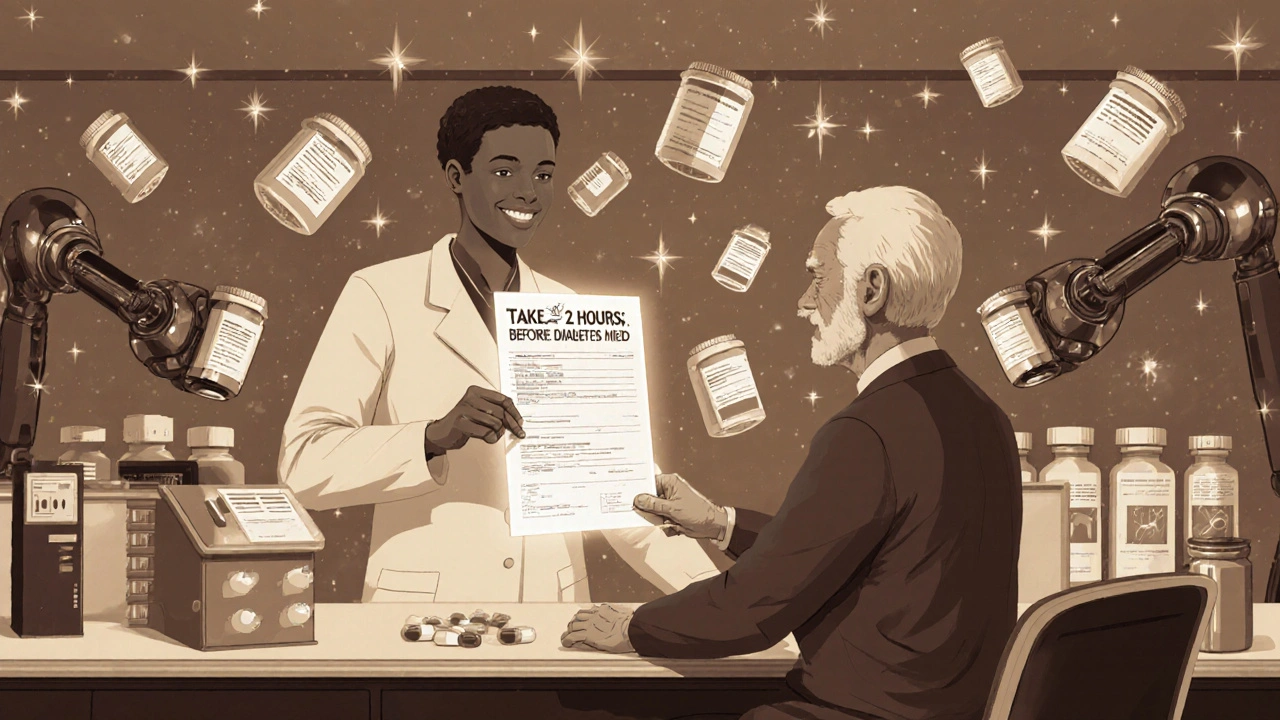
What to Avoid
Don’t rely on memory. Don’t assume all pills with the same color are the same. Don’t skip a dose because you’re late - just take it when you remember, unless the label says "skip if more than 4 hours late." And never combine meds from different bottles unless you’ve checked with your pharmacist. Also, avoid apps that don’t let you edit the schedule. If the app says "take every 8 hours" but you work nights, you need to adjust. The best apps let you tweak times manually after auto-setting from the label.Real-Life Impact
A 2024 study in JAMIA showed that systems using label information improved adherence by 23.7% over basic apps. In some cases, adherence jumped to 82.4% among patients with diabetes, heart disease, or high blood pressure. That’s not just numbers - it’s fewer ER visits, fewer hospital stays, and more control over your health. One man in Wellington, New Zealand, started using Medisafe after nearly being hospitalized for mixing his blood thinner with an OTC painkiller. "I thought I was fine because I took them at 8 and 8. The app showed me they needed to be 4 hours apart. I didn’t know that. Now I never miss a safe window."Next Steps
Start today:- Take out your next prescription bottle. Read the label out loud.
- Write down the timing, food rules, and interaction warnings.
- Download a smart app like Medisafe or MyTherapy.
- Scan the label or manually enter the info.
- Call your pharmacist if anything’s unclear.
- Check your reminders every week - adjust if your schedule changes.
Can I just use my phone’s alarm for my medications?
You can, but it’s risky. Basic alarms don’t account for food timing, drug interactions, or minimum intervals between doses. For example, if you take two medications that must be spaced 2 hours apart, a simple alarm won’t warn you if you’ve taken them too close together. Smart apps that read your label prevent these errors.
What if my prescription label is hard to read?
Don’t guess. Take a photo of the label and show it to your pharmacist. Many pharmacies offer free label reading services. You can also ask for a printed copy with clearer text or a simplified schedule. Some apps like Medisafe let you upload photos to help their AI interpret the text, but always double-check with a professional if you’re unsure.
Do I need to scan every new prescription?
Yes. Each prescription has unique instructions, even if the drug name is the same. Dose amounts, timing, and interactions can change based on your condition or other meds you’re taking. Always update your reminder app when you get a new bottle - even if it’s the same medication.
Can these apps work without internet?
Most reminder apps work offline once set up. Your alarms will still go off, and your schedule will stay saved. But features like label scanning, drug interaction checks, and syncing with your pharmacy require internet. If you’re often without service, download your schedule as a PDF or print it as a backup.
Are these apps safe for seniors?
Yes - especially for seniors. Many apps now have large text, voice reminders, and visual timelines that show when to take each pill. A 2024 AARP survey found that 76.4% of adults over 65 had better adherence when reminders included simple phrases like "take with breakfast" instead of just times. Apps like CareZone and MyTherapy are designed with older users in mind.

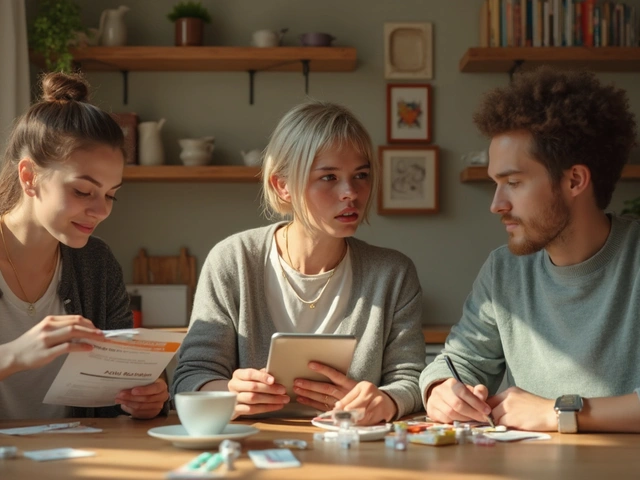

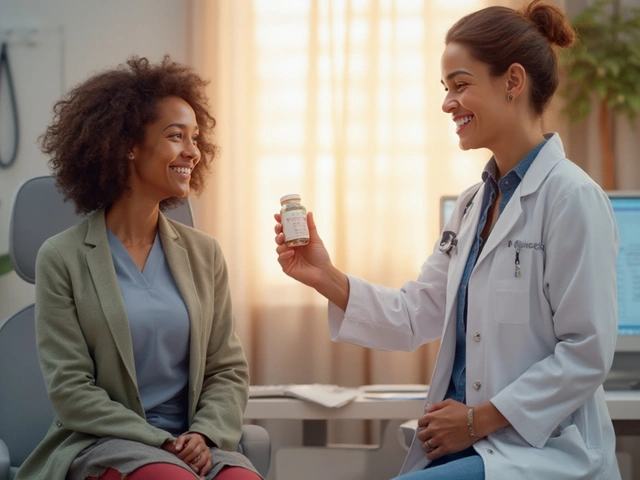
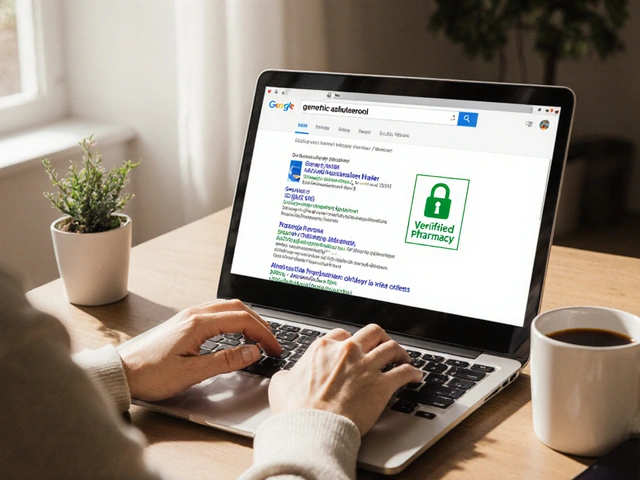

Jennifer Bedrosian
November 11, 2025 AT 09:53I used to just set alarms and hope for the best until my grandma ended up in the ER because she took her blood thinner and ibuprofen together. This post? Lifesaver. I now scan every label with Medisafe and it literally tells me when NOT to take stuff. Why didn’t anyone tell me this sooner?
Lashonda Rene
November 11, 2025 AT 21:26so like i didnt even know that labels had all that info on them like i thought it was just name and dose but nooo its like a whole instruction manual in tiny print and i just skimmed it like it was a cereal box. now im scanning every bottle and writing down the rules on my phone notes and its actually helping me not feel so lost. also i told my mom to do it too shes 72 and she said she feels less scared now
Andy Slack
November 13, 2025 AT 09:42This is the kind of post that should be mandatory reading before you get your first prescription. Seriously. I used to think alarms were enough. Now I know better. My wife’s on five meds and we’ve had zero mix-ups since we started using MyTherapy. It’s not magic-it’s just smart.
Rashmi Mohapatra
November 13, 2025 AT 15:17in india most people dont even read labels they just trust the pharmacist or the doctor and guess what? 3 out of 5 people i know took wrong dose because label said "twice daily" and they took it at 8am and 8pm but it was meant to be 8am and 8pm WITH 12hr gap. dumb. use apps. scan. dont be lazy.
Abigail Chrisma
November 13, 2025 AT 23:18I’ve worked with elderly patients for over a decade and this is one of the most practical, compassionate guides I’ve seen. The part about calling your pharmacist? That’s gold. So many seniors are too shy to ask. We need more of this-clear, kind, and actionable. Thank you for writing this.
Ankit Yadav
November 14, 2025 AT 17:17I used to think the label was just a formality until I had to help my dad sort through his meds after his stroke. Turns out, his blood pressure pill had to be taken 2 hours before his diabetes med. No one told him. The app figured it out. Now I scan every new bottle. It’s not about tech-it’s about survival.
Meghan Rose
November 16, 2025 AT 14:16I’m just saying… if you’re using Alarmy, you’re basically gambling with your life. I saw a guy on Reddit last week who took his antibiotic every 6 hours instead of 8 because his alarm went off at 8, 2, 8, 2… and he ended up with liver damage. This isn’t a suggestion. It’s a warning.
Steve Phillips
November 18, 2025 AT 04:41Oh, so now we’re supposed to trust AI to read tiny print on pill bottles? How quaint. Meanwhile, in the real world, pharmacists have been decoding this since 1987-and yet, here we are, treating a 30-year-old problem like it’s a viral TikTok hack. The real innovation? Talking to a human. The app? Just a glorified digital Post-It.
Rachel Puno
November 19, 2025 AT 23:19I used to forget my meds until I started using Medisafe. Now I get a little voice saying "Take your beta-blocker with breakfast" and it’s so much more helpful than just a beeping alarm. I even showed my mom how to use it-she’s 78 and now she says she feels like she’s got a nurse in her pocket.
Clyde Verdin Jr
November 20, 2025 AT 03:26So let me get this straight-your solution to people being dumb is… an app? Wow. What’s next? A robot that tells you not to put your hand in the fire? This isn’t a problem of information-it’s a problem of human behavior. Apps don’t fix laziness. They just make it prettier.
Key Davis
November 20, 2025 AT 03:55The precision of pharmaceutical labeling is a cornerstone of patient safety. To reduce its interpretation to algorithmic parsing is to risk oversimplification of clinical nuance. While digital tools may assist, they must never supplant professional consultation. This post, while well-intentioned, risks promoting technological determinism over clinical judgment.
Cris Ceceris
November 21, 2025 AT 06:18I’ve been thinking about this a lot lately-how we treat our bodies like machines that just need the right code. But we’re not. We’re messy. We sleep through alarms. We forget. We get tired. Maybe the real solution isn’t just better apps… but better systems. Like pharmacists who call you. Like doctors who write schedules in plain English. Like communities that check in.
Brad Seymour
November 22, 2025 AT 09:49I’m from the UK and we’ve got a system where your pharmacy texts you when your meds are ready and gives you a printed schedule. No app needed. Maybe the real fix isn’t tech-it’s better healthcare infrastructure. Still, this post is solid. Good reminder that labels aren’t decoration.
Steve Phillips
November 22, 2025 AT 10:41You’re right, Key. But let’s be real-most people won’t call their pharmacist. They’ll just Google it and trust WebMD. That’s why apps like Medisafe are the closest thing we’ve got to a safety net for the 90% who won’t do the ‘right’ thing. Tech isn’t perfect-but it’s better than nothing.